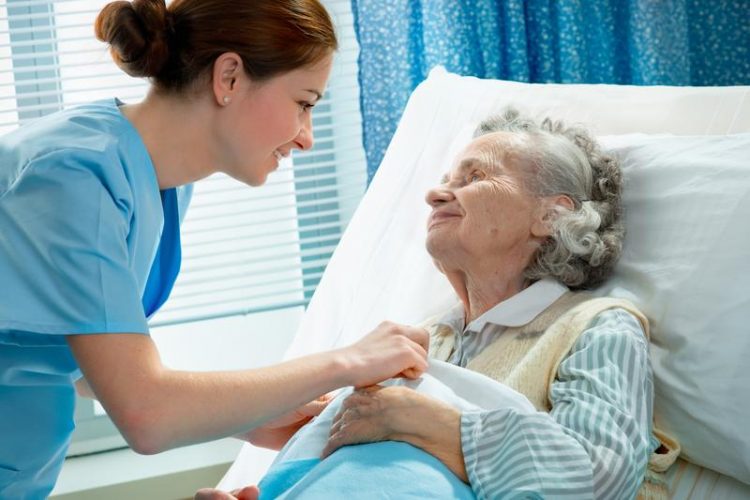Sleep well! New pillow encasings combine hygiene and sleep comfort

In the newly developed pillow encasings, bacteria-proof warp-knitted fabrics are combined with special membrane materials. Alexander Raths ©Shutterstock.com
However, these particletight covers are also an important hygiene precaution anywhere where bed occupancy changes regularly. Greater use of special pillow encasings would make sense in
hospitals and care homes and also in hotels. The covers are bacteria-proof and, like the pillowcases on top of them, are changed and hygienically washed every time someone new occupies the bed. This ensures that no bacteria can be passed via the pillow from one guest or resident to another.
Until now, though, there were some real disadvantages to the encasings that were available on the market, on account of the coated membrane inside them: people found them less comfortable to sleep on because of the disturbing rustling noises and the delayed release of air when they moved about. Now, as part of a research project (AIF No. 16947N), scientists at the Hohenstein Institute have developed a new kind of pillow encasing. Firstly, thanks to the use of bacteria-proof warp-knitted fabrics with a special membrane, the noise has been noticeably suppressed. Secondly, they are more breathable than earlier products, i.e. they absorb the sleeper's sweat more effectively and wick it away from his or her head and body.
First of all, the team led by Dr. Jan Beringer analysed all the things for which existing pillow encasings were criticised and then they designed an entirely new and optimised product. The textile researcher is sure that the new pillow encasings will be widely welcomed. “Until now, despite their clear advantages in terms of hygiene, pillow encasings have not been very widely used in this kind of institution.
Weighing up the costs and the benefits often resulted in conventional pillow encasings not being used,” says Dr. Beringer. “It's not surprising, because there were lots of complaints about the loud rustling noise, the “airbag effect” caused by delayed release of air and generally disturbed sleep due, for example, to excessive sweating.”
In their research, the scientists paid particular attention to reducing the loud rustling noises which occur right in your ear as you move your head, and so greatly impair your rest or recovery. Considerable noise reduction was achieved by ensuring that the fabrics used were ideally suited to their purpose. The underlying design principle is that a fabric should be chosen that is as fine as possible. In this project, warp-knitted fabrics were used.
The application of a membrane to the underside of the fabric provided the textile technology solution for the hygiene security that was also required. Combining the optimised fabric with the specially chosen membranes as a protective barrier against bacteria ensured that there would be no more disturbing rustling noises when people moved about in bed. In a further step, the researchers optimised the way the warp-knitted fabric and the membrane system were combined, with regard to their effects on thermophysiological comfort (thermal insulation, permeability to water vapour) and skin sensory comfort (softness, suppleness). Finally, they tested how well the textile construction withstood commercial processing conditions. If the newly developed pillow encasings are to be suitable for leasing, it is important that there is no reduction in their performance due to commercial processing.
The encasings will mainly be effective in improving hygiene conditions where there are frequent changes of occupancy in care homes, especially during short-term or preventive stays. Thanks to encasings, hotel guests can also climb into their hotel beds without worrying about hygiene. For Dr. Beringer and his team, it was a worthwhile exercise: “This pillow encasing, optimised in every respect, is our contribution to improved comfort and hygiene in hospitals, care homes and hotels. It also allows managers to do a great deal to help their patients or guests get a good night's sleep which will, in turn, help them to relax or recover.”
Weitere Informationen:
Media Contact
All latest news from the category: Innovative Products
Newest articles

High-energy-density aqueous battery based on halogen multi-electron transfer
Traditional non-aqueous lithium-ion batteries have a high energy density, but their safety is compromised due to the flammable organic electrolytes they utilize. Aqueous batteries use water as the solvent for…

First-ever combined heart pump and pig kidney transplant
…gives new hope to patient with terminal illness. Surgeons at NYU Langone Health performed the first-ever combined mechanical heart pump and gene-edited pig kidney transplant surgery in a 54-year-old woman…

Biophysics: Testing how well biomarkers work
LMU researchers have developed a method to determine how reliably target proteins can be labeled using super-resolution fluorescence microscopy. Modern microscopy techniques make it possible to examine the inner workings…





















